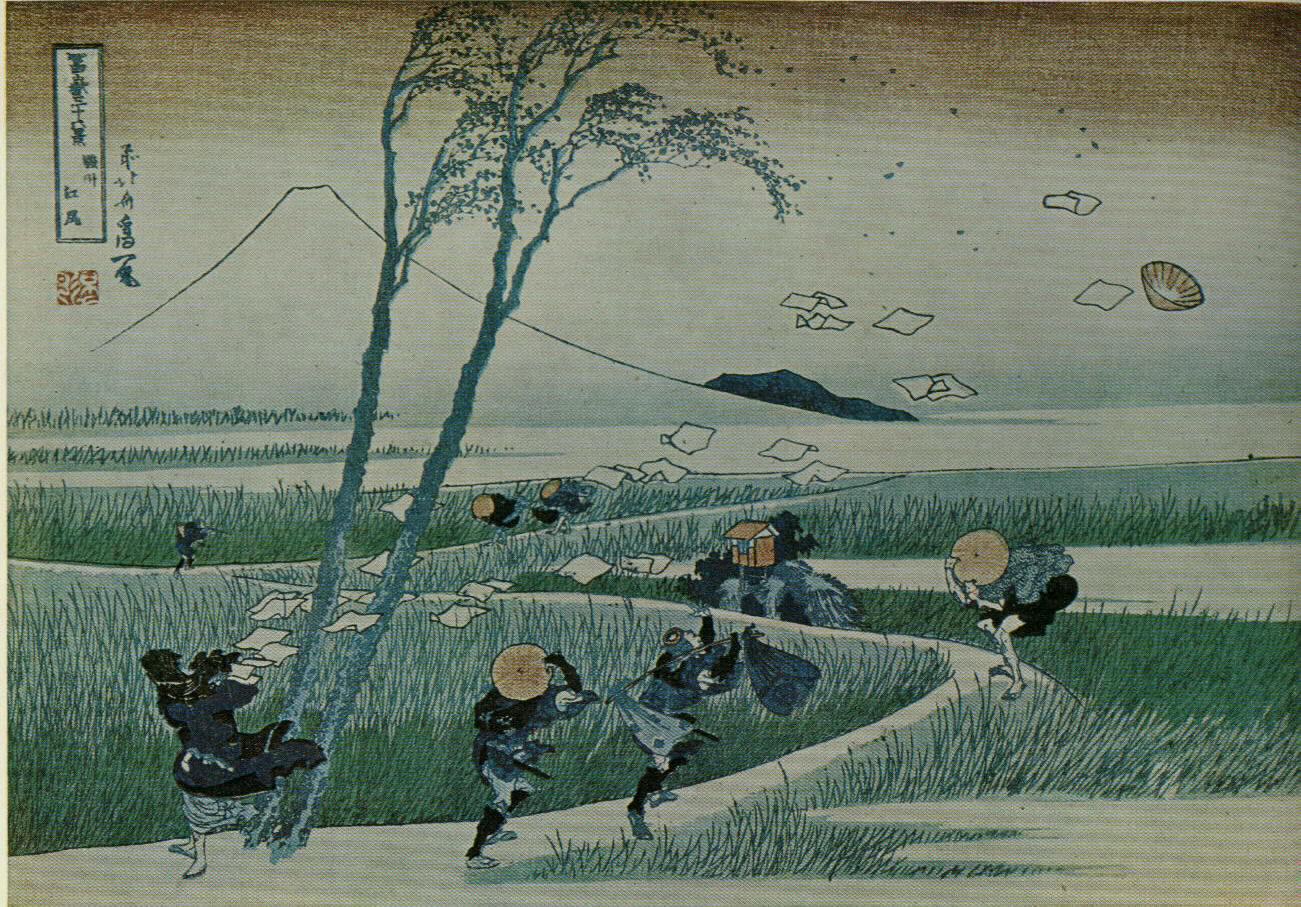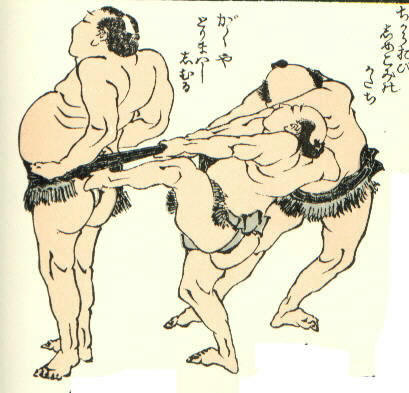

Ukiyo-e Themes and Tokugawa Culture, 3: Landscape and Figures
Probably the ukiyo-e artist most famous in the West is Hokusai (1760-1849), whose woodblock art is known both for his terrifically imaginative series of images of the volcanic height of Mt. Fuji, Japan's most striking natural feature, not far from the Tokugawa capital of Edo, and for his manga images, which sketch with great humor the characters of ordinary life in Tokugawa Japan.
Landscape art was an aspect of ukiyo-e that initially developed rather slowly. In the nineteenth century, however, it was spurred by increasing controls on other forms of images by the government censors. As one of the few areas of ukiyo-e generally free from sexual content, landscape was a safe haven for artists during periods when the government undertook cultural reforms banning explicit sexuality. The four images below illustrate the tremendous range of styles and ideas that Hokusai engaged in portraying Mt. Fuji in various types of weather, from various distances and perspectives, and in the contexts of many of the everyday activities of the lives of those who lived in Fuji's shadow.




Very different images of Tokugawa Japan are conveyed by Hokusai's manga, which were issued in a series of cheap volumes as a publishing sensation towards the close of his life. The images below portray: 1. an ordinary farmer taking a break; 2. Buddhist priests loudly chanting sutras; 3. an skinny samurai assuming a cultivated pose, sword by his side, fanning himself; 4. a sumo wrestler having his thong and sash tightened before a match; 5. a woman, man, and cat from a group of images of well-rounded people; 6. two samurai practicing their swordsmanship.
1.
 2.
2.
 3.
3.
 4.
4.

5.
 6.
6.

Almost Hokusai's equal in popularity in the West, the landscape master Hiroshige (1797-1858) -- the last artist whose work we will touch on here -- was actually more popular in the West during his own life time. After Japan was "opened" to the outside world by the military threat of American gunboats in 1854 (spelling the doom of the Tokugawa and of the shogunal, samurai form of government), images from Japan, chiefly woodblock prints and ceramics, flooded European and American markets, eager for exotic things. A craze for things Japanese resulted (the famous Gilbert & Sullivan opera The Mikado was one symptom), and among the areas where Japanese impact was greatly felt was in the art world, particularly in the works of Impressionist painters. Hiroshige's landscape and nature paintings were the most influential among these painters, and as a closing set of images, three of Hiroshige's prints are shown below, aligned to the left and contrasted with Western Impressionist paintings that are clear adaptations of Hiroshige's images. The first set includes a painting by the American artist James McNeill Whistler; the others include paintings by the Dutch painter Vincent Van Gogh, direct adaptations of Hiroshige -- Van Gogh was probably more deeply touched by the ukiyo-e aesthetic than any other painter.





